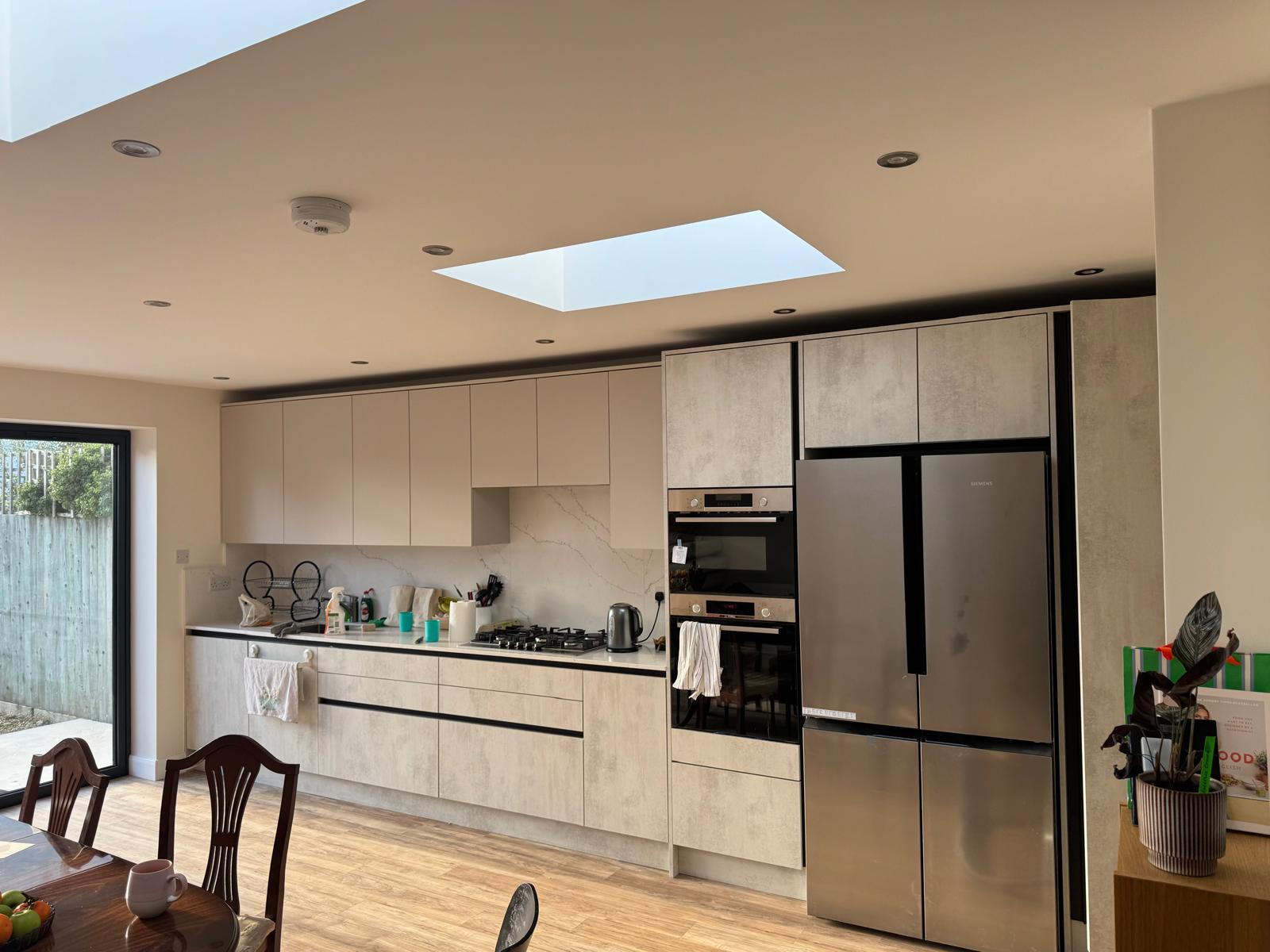Loft Conversions
Quality work from dedicated professionals.
Loft Conversions
In London, every square metre counts. Space is precious, and moving to a bigger property can cost a fortune. That’s why more homeowners are looking up — quite literally. Converting your unused loft into a bright, functional living area is one of the smartest and most rewarding ways to add both space and value to your home.
At Force Builders, we’ve been turning dusty attics into stunning, practical rooms for years. Whether you’re dreaming of a calm bedroom retreat, a sleek home office, or even a private studio, we’ll help you transform that underused space into something truly special.
Why Convert Your Loft?
A loft conversion is more than just a building project — it’s a lifestyle upgrade.
It gives you extra space without eating into your garden or altering your home’s footprint. Many of our clients in London choose loft conversions to create an additional bedroom, a guest suite with an ensuite bathroom, or a comfortable workspace.
It’s also one of the most cost-effective ways to increase your property value. A well-designed loft conversion can boost your home’s worth by up to 20%, while improving the way you live every day.
And perhaps the best part? You don’t need to move out or uproot your life while the work is happening — our process is efficient, tidy, and respectful of your home.
Different Types of Loft Conversions
Every home is different, and the type of loft conversion that suits you depends on your roof structure, space, and style.
At Force Builders, we offer several tailored options:
-
Dormer Loft Conversion – The most popular choice, adding headroom and floor space with a box-shaped extension on the roof.
-
Velux (Rooflight) Conversion – Minimal structural changes, maximum natural light. Ideal if your loft already has good height.
-
Hip-to-Gable Conversion – Perfect for semi-detached homes, this expands the side of the roof for more usable space.
-
Mansard Conversion – A stylish, full-scale transformation that changes the roof shape and creates a proper extra floor.
Not sure which option fits your home? We’ll visit, measure, and explain what’s possible — clearly, honestly, and without the jargon.
Designed for Modern Living
A great loft isn’t just about adding space — it’s about making it feel like part of the home.
We pay attention to every detail: natural light, ventilation, insulation, and clever storage. You’ll be surprised how much comfort and personality can fit under one roof.
Our design team can help you create an airy bedroom with skylights that flood the space with daylight, or a warm, private home office with built-in shelving and hidden storage. Every detail is planned to make the most of your new space — beautiful, functional, and efficient.
Our Process: Simple and Stress-Free
We handle everything from start to finish — design, planning permissions, structural work, electrics, and final finishes. You’ll have a dedicated project manager keeping you informed at every stage.
We know that communication is key, so you’ll always know what’s happening, when, and why.
And because we work across London, we understand the challenges of city homes — tight access, strict regulations, and tricky roof structures. We’ve seen it all and know exactly how to make it work smoothly.
Built to Last
We use only high-quality materials and proven methods to ensure your new loft is warm, safe, and built for the long term.
Proper insulation, energy-efficient windows, and solid structural support come as standard in every project we do. The result is not just more space — it’s comfort, peace of mind, and long-lasting quality you can feel every day.
Let’s Bring Your Loft to Life
If you’ve got an empty loft sitting there gathering dust, it might be time to do something with it. We’ve helped plenty of London homeowners turn that forgotten space into something genuinely useful — a room that feels like it was always meant to be there.
At Force Builders, we don’t just “add a floor.” We think about how you’ll use it, how the light will fall in the morning, and how to make it blend with the rest of your home. It’s this attention to the small things that makes a big difference in the final result.
So if you’re thinking, “maybe it’s time to finally use that attic,” give us a call. We’ll pop round, have a chat, look at the space, and give you honest advice — no pressure, no sales talk. Just a straightforward conversation about what’s possible and how to make it happen.
Looking for a reliable local team in London? Force Builders is here — ready to take on your next project with quality, care, and experience you can trust.
Why Choose Us
Built on Trust. Focused on Quality. Committed to You.
Two decades of projects across London — from small renovations to full-scale builds. We know what works, what lasts, and how to get it right the first time.
Every project is handled by skilled, qualified tradespeople who take pride in their craft. No shortcuts, no guesswork — just reliable workmanship.
We plan carefully, work efficiently, and keep you updated every step of the way. Deadlines matter — and we make sure to meet them.
Questions, updates, or emergencies — we’re always just a call away. Because great service doesn’t end when the tools are packed away.
See Our Work. Experience the Difference.
